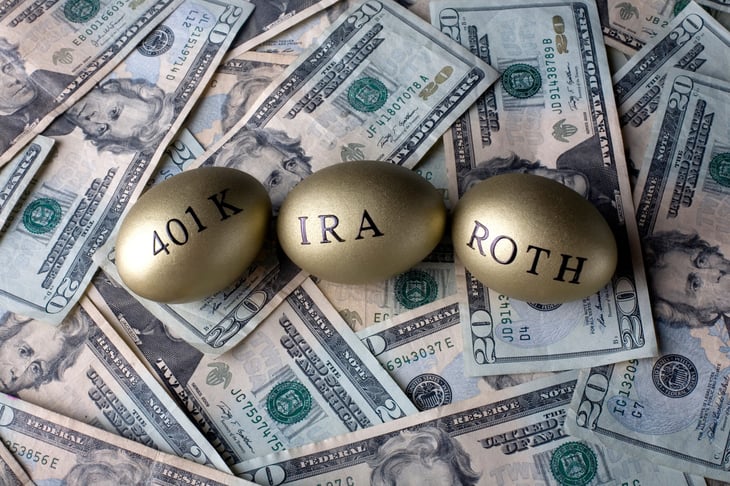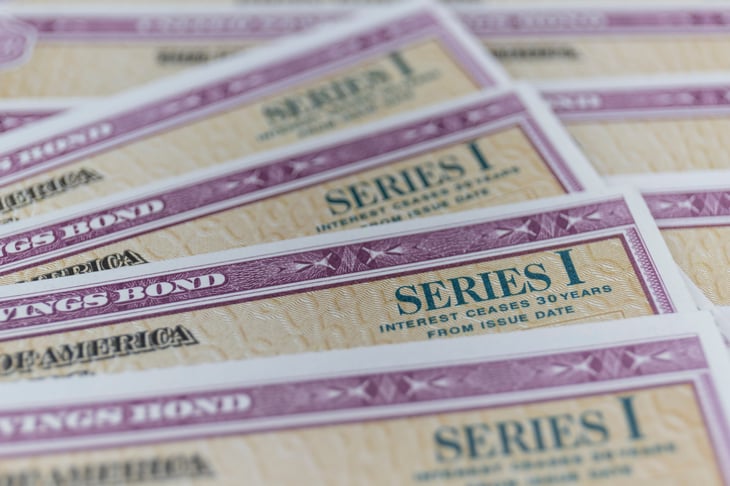
Know your wealth and you’ll have a good sense of your economic health. Having financial assets means you’ll have a way to pay bills even if you fall on hardships such as unemployment, illness, or divorce,
Wealth varies widely from one family to the next, according to the U.S. Census Bureau’s recently released report, The Wealth of Households. Most households own vehicles and have bank accounts, but retirement accounts and home equity are among the largest sources of household wealth, it finds.
The median household wealth in 2021 — the latest year for which Census figures are available — was $166,900. However, one in 10 households had zero or negative wealth while another one in 10 exceeded $1.6 million. To figure your own wealth, add up the value of everything you own and subtract your debt.
Here’s a look a the most commonly held assets, according to the U.S. Census Bureau. (Note: Households in the top 1% of wealth were excluded for these findings.)
1. Assets at financial institutions

Households who have this type of asset: 95.7%
Share of all household wealth in this type of asset: 8.1%
Median value of this asset: $10,000 per household (in 2021 dollars)
Most people access financial services from banks and credit unions, and these can be important for financial well-being.
Following are median balances of savings and checking accounts by age in 2021 dollars, according to the U.S. Census Bureau:
- Under 35: $7,000
- 35 to 44: $9,230
- 45 to 54: $9,000
- 55 to 64: $11,000
- 65 and up: $15,000
2. Vehicles

Households who have this type of asset: 82%
Share of all household wealth in this type of asset: 3.2%
Median value of this asset: $15,400 per household (in 2021 dollars)
Your vehicle is an asset you can sell for cash, but its value falls over time. You might still be paying it off too, and any debt you owe offsets its value.
The average auto loan balance in 2022 was $22,612, says credit scoring company Experian, and the average loan term was nearly six years. A new car bought for the average price of $48,000 in 2023 will lose nearly half its value in four years, according a Progressive online car depreciation calculator.
3. Home equity

Households who have this type of asset: 61.9%
Share of all household wealth in this type of asset: 28.5%
Median value of this asset: $174,000 per household (in 2021 dollars)
Homeowners are wealthier than renters, the Census Bureau says. Home-owning households had a median wealth of $397,800, about 44 times larger than the $9,000 median wealth of renters. Exclude home equity, and the median wealth of home-owning households was $158,400. That’s still 17.6 times higher than renters.
If home equity is 80% of your net worth, you may be house rich and cash poor, real estate agent Patricia Vosburgh told Realtor.com. Besides not having money to cover a medical bill or home repair, the St. Petersburg, Florida, professional says, “You’re working constantly to hold onto the asset and not really enjoying the benefits of homeownership.”
4. Retirement accounts

Households who have this type of asset: 59.5%
Share of all household wealth in this type of asset: 34.1%
Median value of this asset: $79,900 per household (in 2021 dollars)
In tabulating wealth held in retirement accounts, the Census Bureau counted individual retirement accounts (IRAs), Keogh accounts, Thrift Savings Plans and 401(k) accounts. However, it did not include “equity in pension plans” in this figure.
These are median retirement account balances by age, according to bureau data:
- Under 35: $16,000.
- 35 to 44: $52,700.
- 45 to 54: $100,000.
- 55 to 64: $150,000.
- 65 to 74: $170,000.
5. Stocks and mutual funds

Households who have this type of asset: 27.3%
Share of all household wealth in this type of asset: 11.9%
Median value of this asset: $32,000 per household (in 2021 dollars)
Stocks and mutual funds — a diversified portfolio of stocks, generally considered a safer investment than individual picks — make up a significant portion of household wealth and feature prominently in retirement accounts.
They can sometimes be a tricky factor of wealth to measure accurately, due to the constant fluctuations of the stock market. The wealthiest people in the world see their estimated net worth rise and fall by billions as stocks ebb and flow.
6. Business assets

Households who have this type of asset: 15.4%
Share of all household wealth in this type of asset: 3.9%
Median value of this asset: $8,001 per household (in 2021 dollars)
The amount of wealth generated by a business or profession varies by the size and profitability of the company, the experience and skills of the owner and the overall economic climate.
If you are interested in adding this asset to your personal wealth, the Small Business Administration offers a 10-step guide to starting a business.
7. Other real estate

Households who have this type of asset: 8.2%
Share of all household wealth in this type of asset: 3.6%
Median value of this asset: $100,000 per household (in 2021 dollars)
Real estate besides your primary residence can be a sound investment strategy, as property values often appreciate over time, and you could get tax breaks, AARP says. However, it warns that property also comes with extra expenses such as maintenance, repairs and possibly homeowner association fees.
The highest concentration of second homes in the U.S. — often used as vacation homes — can be found in the Marinette-Iron Mountain area along the Wisconsin-Michigan border, says a Madison Trust Company study of Census Bureau data. More than 1 in 4 homes in the “Four Season Vacationland” are used only seasonally, recreationally or occasionally.
8. Bonds

Households who have this type of asset: 8%
Share of all household wealth in this type of asset: 0.7%
Median value of this asset: $3,000 per household (in 2021 dollars)
Bonds typically fluctuate less than stocks and can provide you with steady income as they pay fixed interest rates. With a Series I government savings bond, you earn both a fixed rate of interest and a rate that changes with inflation.
9. Rental property

Households who have this type of asset: 7%
Share of all household wealth in this type of asset: 4.3%
Median value of this asset: $200,000 per household (in 2021 dollars)
While rental property is the asset with the highest median value in the Census Bureau study, it was among the least commonly held.
Rental property receipts can boost your income and wealth, but being a landlord comes with costs. You’ll need to find and screen tenants, collect rent, pay taxes and maintain the property.
Other types of assets

Households who have this type of asset: 24.9%
Share of all household wealth in this type of asset: 4.6%
Median value of this asset: $20,000 per household (in 2021 dollars)
Among other assets the bureau counted include annuities, trusts, cash life insurance policies, educational savings accounts, mortgages held for sale of real estate and amounts due from sale of business property.
Other key findings

Married householders tend to do better building wealth than unmarried ones, the Census Bureau found. The study notes:
“For example, married householders under the age of 35 had a median wealth 9.2 times that of unmarried female householders and 3.1 times that of unmarried male householders. This pattern suggests that the gaps in median wealth cannot solely be attributed to the presence of an additional adult in the household; otherwise, married householders would have no more than twice the median wealth of unmarried householders.”
Households also generally accumulate more wealth as they age, according to the bureau.
The median wealth of householders under 35 was $30,500 in 2021. For those 70 to 74, it was $373,900, which is more than double the median wealth across all ages. However, for those 75 and older, the median drops to $315,900, presumably as aging households eventually draw down their wealth.





Add a Comment
Our Policy: We welcome relevant and respectful comments in order to foster healthy and informative discussions. All other comments may be removed. Comments with links are automatically held for moderation.